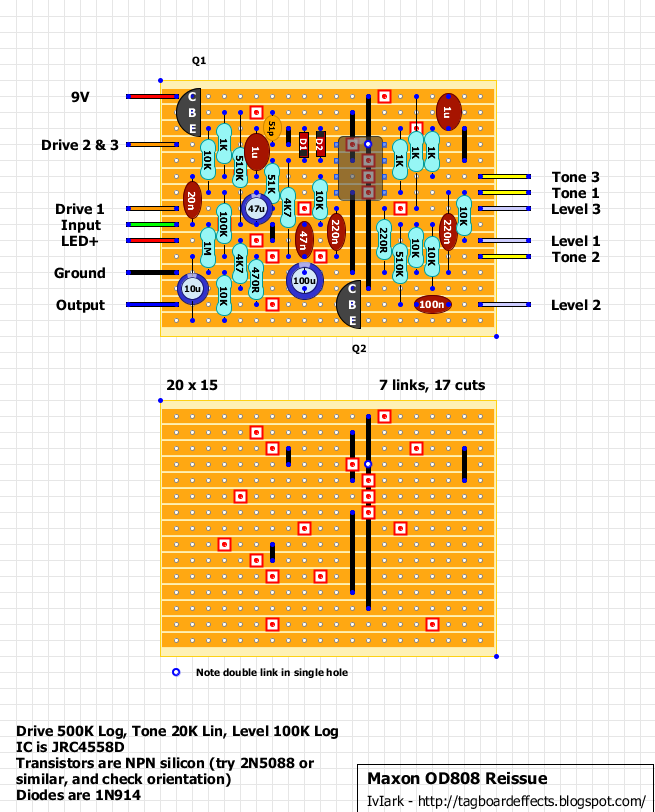Hello folks,
story first, then a more detailed question:
I want to build a "just tone knob" tubescreamer-like pedal for my board since it's the only control i fiddle with during my bands live set. Hence I'm going to build myself a Maxon OD 808 without the level and drive knobs.
I want to use this layout:

Question is: how do I replace the pot's correctly?
For the drive it seems pretty clear, connect the two holes with a 500k resistor. I usually run it at the lowest setting.Is there a way to decrease the amount of distortion I get at minimum setting without messing with the rest of the circuit too much?
As far as the level knob goes, I always run it maxed. how do I go about this? A resistor between the holes where volume 2 and 3 would usually connect to the pot and a bridge between level 2 and 1?
I appreciate the help a lot and thanks for reading.
Cheers
Chris